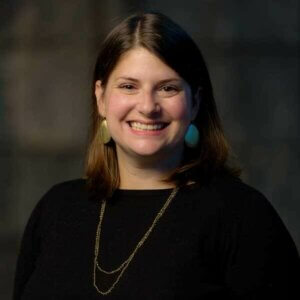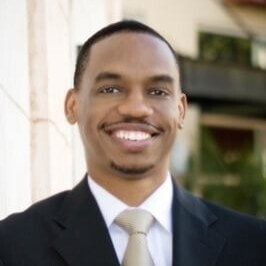How to Nurture a Culture of Generosity
How important is nurturing a culture of generosity? Research shows when churches teach on giving monthly, 73% see a correlation to financial growth. When teaching on giving weekly, 90% see financial growth.
Understanding what data can teach us on increasing giving in our faith-based communities will lead to building a sustainable financial foundation.
Givelify hosted a webinar to have this important conversation. We welcomed Melissa Spas, Managing Director of Education and Engagement with Indiana University’s Lake Institute on Faith & Giving. She shared recent research on motivations to give and congregations’ approaches to speaking on finances.
She was joined by Anthony DeShazor, Senior Vice President of Customer Experience & Success at Givelify. He has more than 15 years of experience as a pastor and more than 27 years of experience working in senior leadership positions at various technology companies.
Through coaching hundreds of Givelify customers and growing the financial success of his own congregation, DeShazor understands the keys to building a culture of generosity.
>> View and share the webinar recording: Nurture a Culture of Generosity in Your Congregation <<
“Too often the only time we talk about money in our religious communities is when we are asking for it,” Spas said to the audience of pastors and faith leaders who joined the webinar. “We don’t address the broader economic questions or the relationship that people of faith have to their own money, or to wealth and poverty. There is an opportunity here.
“Congregational leaders and pastors can provide a meaningful service to their members by teaching about money more broadly,” she said. “Scripture has a lot to say on nurturing generosity of the people entrusted to your care.”
The current state of faith-based giving
Spas kicked off the conversation by discussing the shifting landscape of religious giving. Since the 1900s, research shows a growing number of Americans are no longer associated with a specific faith. In fact, just prior to the turn of the century, nearly 35% of Americans reported no personal faith-based affiliation.
Relatedly, money going to faith-based organizations has also been on the steady decline. Since the 1980s, donations to faith-based organizations fell from 59% of all philanthropic giving to 29% in 2020. Giving to philanthropic causes remain at overall record high. However, the percentage of American households that choose to give has declined nearly 20% since 2000.
For example, $471.4 billion was donated in 2020. Of that, giving to religious organizations represented slightly less than one-third, Spas shared in her presentation. Religion still has the largest piece of the charitable giving pie, but that has rapidly declined over the last 40 years, she said.
During the height of the pandemic, faith-based organizations continued to see a 5% decline in giving on average, despite an increase in overall religious participation.
Modern trends show a continuous gradual decrease in religious affiliation and associated giving. Faith-based organizations must learn how to capture the generosity of their congregations to achieve their annual goals.
“If you feel anxious, nervous, or uncomfortable with addressing the topic of money in your faith community, you are not alone,” Spas said. “There is a significant taboo related to money talk that certainly plays out in our religious communities.”
Understanding religious generosity
Studying and understanding donor motivation will empower pastors and faith leaders to build successful fundraising campaigns harnessing the power of shared generosity.
Research on generosity frequently shows those who give to faith-based causes are driven by religious motivations.
Those who give do so because they are intentionally invited to do so and are directly influenced by the actions and words of leaders in their organization.
When faith leaders teach giving, lead by giving themselves, and inspire givers with impact-based messaging, members are more likely to give.
“People give because they are invited to do so,” Spas said. “Teaching about giving and inviting people to give truly matter.
“The actions of our faith leaders also matter, including the way that we talk about giving, our own generosity, how we invite the offering, and how we celebrate giving,” said said.
“These all have an impact on the culture of giving within an organization,” she added.
Two congregational types
Spas discussed research from the Lake Institute that shows there are two distinct types of giving cultures in congregations.
Type 1: Pay-the-bills
The first type of giving culture focuses on “paying the bills.” This type of congregation approaches financial needs from a scarcity perspective, always focusing on keeping the doors open, lights on, and basic needs met.
Appeals often position giving as a religious duty. The result of this approach may indeed secure needed funding but is often transactional in nature. With this approach, it is also difficult to build lasting relationships with members.
Type 2: Share-the-vision
The second type of culture focuses on “sharing the vision.” This type approaches generosity from an external and visionary perspective. Pastors and faith leaders invite members to partner with their community and grow together in faith and impact.
The unique difference between this cultural dynamic and “pay-the-bills” is this focus often leads to more lasting and meaningful relationships and stronger, growing congregations.
“There is a higher level of spirituality in the ‘share-the-vision’ type,” Spas said. “Money follows mission. When there is clarity about what churches and places of worship are called to do, people are energized by that. People want to do something that matters.”
How does a congregation transition from a “pay-the-bills” mentality to “share-the-vision?”
“Pastors have to make teaching about giving or the conversation around finances a part of the ministry foundation,” DeShazor said.
He added that churches and places of worship should include the role that generosity and finances play in their faith as part of the congregation’s statement of beliefs.
“Build it into your culture. Show the connection between your congregation’s faith and their generosity,” he said.
Building a culture of generosity through the giving cycle
Through their research, the Lake Institute found four key steps necessary for nurturing a lasting culture of generosity in congregations. These steps, while sequential in nature, should cycle through continuously and build off each other in time and strength.
Step 1: Tell the story
Pastors and faith leaders should begin their giving cycle by first sharing their story. By bringing members and guests along in their journey, including their mission, annual vision, and true purpose, leaders can build a foundation aligned with a share-the-vision culture. This story should be consistently reinforced through programming, teaching, and celebration of successes.
“Make sure members of your congregation share stories of how their generosity led to an increase in their faith or an increase in their finances within their household,” DeShazor said. “Collect testimonies that show through their faithfulness, your members received a blessing or received an increase.”
DeShazor also suggested making the testimony as visually engaging as possible.
Step 2: Make the ask
Research shows people are motivated to give often due to direct appeals for giving. How, why, and when they receive these “asks” are critical factors in their decision to give. Pastors and faith leaders must be comfortable speaking on money and encouraging their members to support the vision of the church or place of worship.
“When we do an effective job of ‘telling the story’ through preaching and teaching, and through written communication, then we are well-positioned to ask,” Spas said. “Asking is complex. We want to offer many opportunities to give.”
Through digital giving apps like Givelify, members and viewers can indeed give anywhere and at any time. “Many pastors and faith leaders have mechanisms to invite giving, including through Givelify,” Spas said.
“Use of the mobile app or the web-based platform makes it so easy for people to send their gift, which then makes it easy for us to invite people to give,” she said.
“Online giving lowers the barriers to give,” she said. “It is a way for churches and places of worship to extend hospitality.”
Step 3: Learn and plan
Pastors and faith leaders should plan to consistently evaluate progress against their annual fundraising goals. Research from the Lake Institute found when pastors and clergy study their congregations’ giving patterns, their churches saw 53% more financial growth in less than three years.
By using tools like Givelify’s Analytics Studio, pastors and clergy can quickly see changes in donor giving behavior and giving styles, such as if they’re experiencing a decrease in the total number of consistent givers in their congregation. By tracking these changes, pastors and faith leaders can respond with agility, modifying their annual giving strategy and tactics to lay the foundation for success.
Step 4: Keep momentum going
Finally, pastors and faith leaders should focus on building the momentum of generosity once initial roots have been established.
As research shows, faith leaders who continue to share spiritual guidance on the importance of giving see monumental impacts in long-term generosity.
Showing appreciation and celebrating the impact of regular generosity will fuel future support and reinforce for givers how they are achieving their individual goals through supporting the mission of the church or place of worship.
“Think through the steps of the giving cycle where you have clear strengths and places where you might take new action to nurture generosity among those entrusted to your care,” Spas said.
The role of faith leaders in developing a culture of generosity
Leaders must first determine their own theology of giving and money before they can lead their congregation on the matter, Spas said. “Do you trust that God will provide, and that all that is needed will be available? If that is the case, how can you lead and teach in a way that is reflective of that theology?
“Are there things you can do as a pastor or faith leader within your organization to start a new conversation about money and generosity?” she asked.
One necessary shift in thinking involves viewing fundraising as an activity of the ministry instead of something done simply in support of ministry, Spas said.
“It’s my deep hope that religious leaders can feel that giving and nurturing generosity are every bit as spiritual as any other aspect of their pastoral ministry,” she said. “It goes alongside prayer, pastoral care, and worship. Generosity is also important to the spiritual vitality of the people entrusted to you.”
A culture of generosity is critical to your success
“Nurturing a culture of generosity in your congregation is critical to your long-term success,” DeShazor said. “However, it can be incredibly difficult. There is no easy fix. It takes hard work, consistent focus, and dedication.
“At Givelify, we hear the same questions repeatedly: How and when to fundraise? Can we predict the donations we will receive each Sunday? How can we increase our number of consistent givers? Can we grow overall giving?
“This conversation, along with other content we will provide to our organizations, is designed to help you answer these questions and more,” he said. “Our goal at Givelify is to help you fund your vision and achieve your mission.”
To learn more, read “5 Tips for Churches to Increase Consistent Givers,” and watch the video. You can also view the “Nurture a Culture of Generosity” webinar here. Read “3 Tips to Maximize Easter Giving” as you make final preparations for Easter Sunday.
Here is a list of books mentioned during the webinar:
- American Generosity: Who Gives and Why by Patricia Snell Herzog and Heather Price
- Autopsy of the Deceased Church: 12 Ways to Keep Yours Alive by Thom S. Ranier
- Fishing Differently: Ministry Formation in the Marketplace by Rev. Dr. Sidney Williams Jr.
- The Five Star Church: Serving God and His People with Excellence by Stan Toler
- The Paradox of Generosity: Giving We Receive, Grasping We Lose by Christian Smith and Hilary Davidson
- A Spirituality of Fundraising by Henri J.M. Nouwen







